Also known as color vision deficiency (CVD), millions of Americans suffer from color blindness. According to EnChroma, roughly 350 million people worldwide are color blind, including one in 12 men and one in 200 women. Naturally, color blindness can result in challenges in one’s everyday physical or digital life. From interpreting bus stop instructions to recognizing red and green traffic lights, many challenges occur based on a person’s degree of color vision deficiency.
Keep reading to learn more about the types of color blindness, including a full guide with pictures, complete with a word on the types of color blindness, how color blindness affects daily life, and assistive technologies that allow the color-blind to fully immerse themselves in the digital world without consequences, thanks in part to the Accessibly accessibility overlay widget.
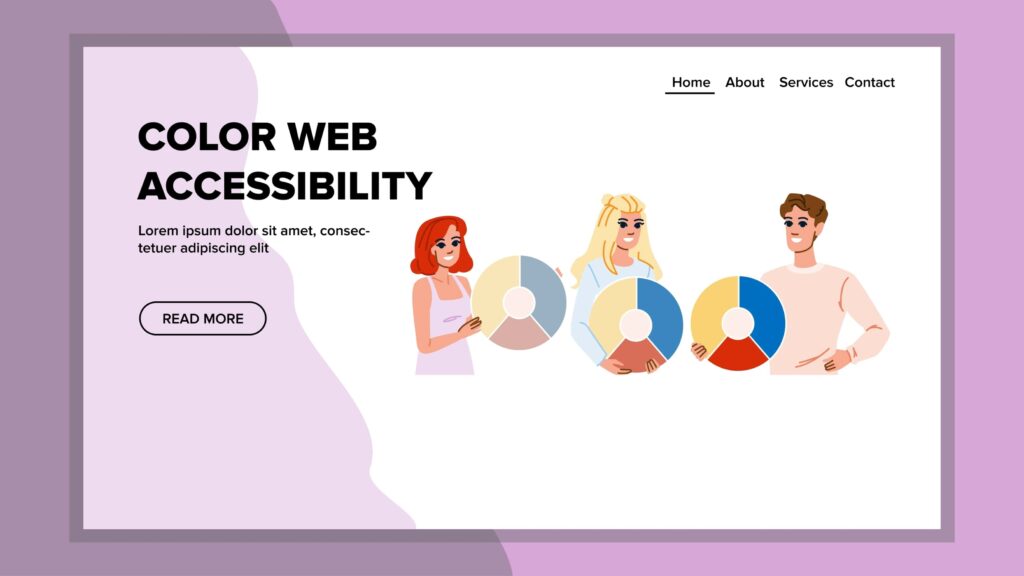
Introduction to Color Blindness
Color blindness is a condition where individuals have difficulty distinguishing certain colors, such as red and green, and can struggle with hundreds of different shades due to faulty color-detecting cones in the eye. Earlier, we cited a statistic indicating that one in 12 men is affected by this condition, compared to one in 200 women, largely due to the deficiencies associated with the X chromosome (of which men have only one).
Inherited color blindness can also affect a person’s ability to perceive color. Various conditions may arise from this, including an inability to see dark gray, defective cone cells, and issues with blue cones, leading to different hues that do not appear similar.
Three prevalent misconceptions are that color-blind individuals see everything in black and white, that color blindness only affects men, and that art or visual experiences cannot be enjoyed.
In reality, only about 1% of color-blind people experience total color blindness, perceiving the world in shades of black and gray. While the prevalence of color blindness is indeed higher among men (1 in 12), it also affects 1 in 200 women due to the influence of the X chromosome. Additionally, even those who are color blind can thoroughly enjoy art and visual experiences. Other artistic elements, such as contrast and texture, can effectively replace the traditional visual experience of discerning color, allowing for the creation and appreciation of objects or paintings.
Types of Color Blindness
There are three types of color blindness: red-green, blue-yellow, and complete color blindness, each with specific differences.
The most common type is red-green color blindness, which indicates sensitivity to red and green light. In contrast, blue-yellow color blindness affects how individuals perceive those colors.
As a result, pale shades or dark purples can be hard to distinguish, along with various shades due to abnormal vision or heightened light sensitivity.
Naturally, those with red-green color blindness may have trouble driving, particularly in identifying traffic light colors, while individuals with blue-yellow color blindness may find everyday activities like shopping more challenging due to difficulties judging colors.
Here are some related conditions:
Source: https://pilestone.com/pages/color-blindness-simulator
Protanomaly
Reds appear faded or muted, with a tendency to blend in with green.
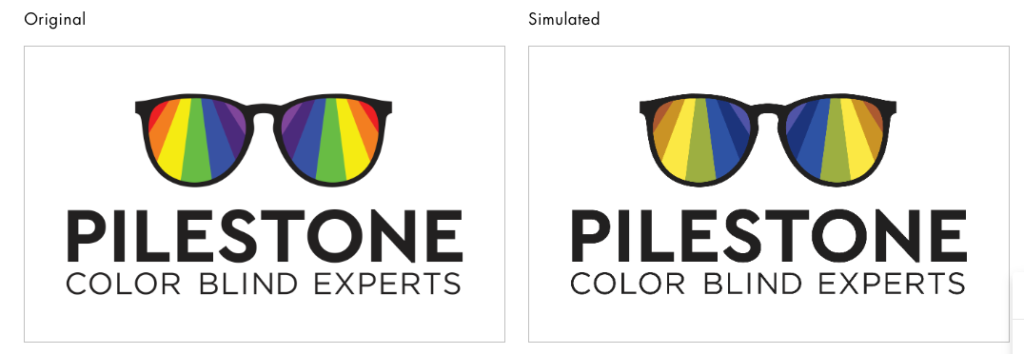
Deuteranopia
Green colors are hard to tell from red, yellow, or brown.
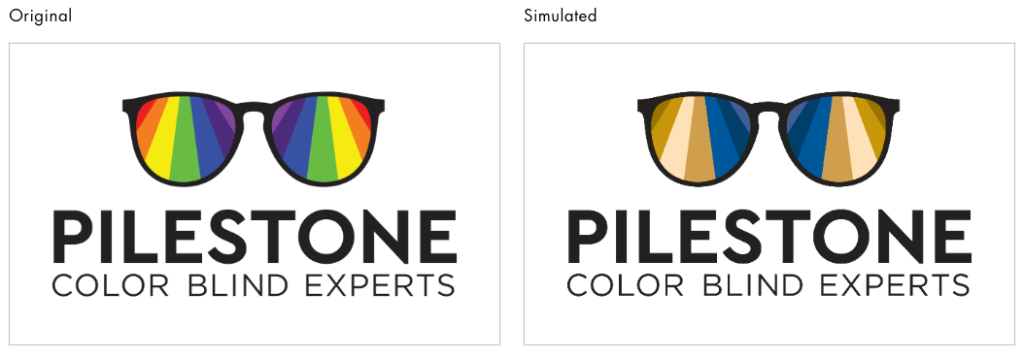
Deuteranomaly
Greens appear faded or muted, making it more challenging to distinguish them when they are alongside different colors.
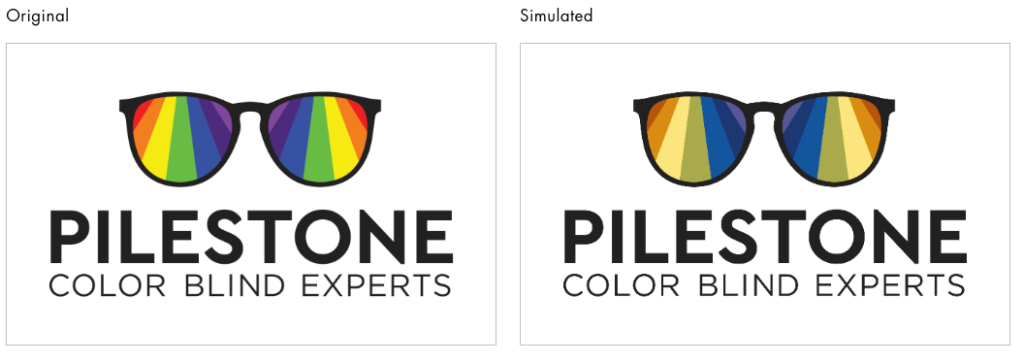
The second type of color blindness is blue-yellow color blindness, of which there are two distinct conditions: tritanopia and tritanomaly.
Tritanopia
There is confusion between blues and yellows, often mistaken for greens and purple/pink, respectively.

Tritanomaly
This condition leads to faded or washed-out blue colors, making it more challenging to distinguish between blues and yellows.
The last type of color blindness, complete color blindness, is precisely what the name implies. Affecting roughly one in 33,000 people, those suffering from achromatopsia or achromatomaly see the world only in shades of black, white, and gray due to non-working or defective cones in the retina failing to perceive and interpret color correctly.
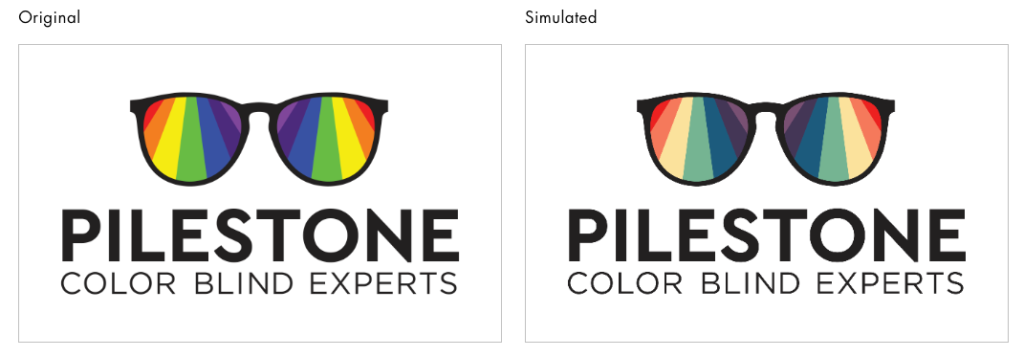
Achromatopsia
Individuals see everything in shades of black, white, and gray with no color perception.
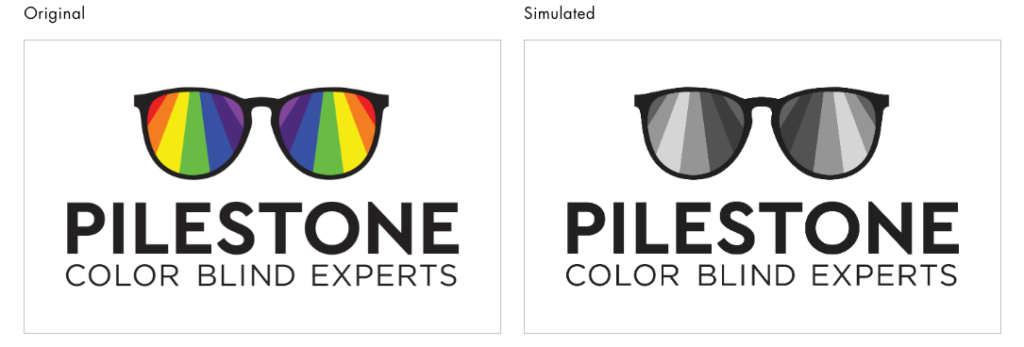
How Color Blindness Affects Daily Life
Color blindness affects daily life in several ways, particularly through challenges in everyday situations. Drivers with red-green color blindness, for example, may have difficulty distinguishing between green, yellow, and red street lights, which could require intense focus and may lead to accidents. Additionally, shopping for items such as toothbrushes or towels can present challenges when trying to identify indistinguishable colors.
According to the American Academy of Ophthalmology, about 1 in 12 men (or 8%) and 1 in 200 women have partial or full-color blindness, affecting the lives of millions of people. As a result, bright greens, light blues, purples, and certain other colors may be very hard to tell apart.
Implications for Digital Accessibility
Digital accessibility is another significant area where color blindness poses challenges. Many inaccessible websites, apps, and software programs employ poor color choices and lack distinguishable error messages, charts, and other interactive elements, often making them indistinguishable for individuals with color vision deficiency.
The World Health Organization (WHO) reports that close to 285 million people worldwide live with partial or total vision loss, making the promotion of accessibility essential.
Tools and Solutions for Color Blindness
While color vision deficiency is prevalent throughout society, a range of tools and solutions can assist the color blind in better interpreting information on screens. The following tools are designed to avoid the misinterpretation of data:
Color Blindness Filters
Individuals with color vision deficiencies can benefit from color blindness filters by wearing color-blind glasses or using mobile apps to view colors in the real world. Specialized glasses popular among the color blind include EnChroma and Colorlite, which use a specialized lens to reset the color spectrum by filtering out wavelengths of unnecessary light.
Simulation apps like Colorblind Pal and Chromatic Vision Simulator allow users to simulate colors based on preset conditions, enabling them to perform tasks that rely on interpreting colors, such as shopping for shoes or groceries.
The vast majority of people do not need these tools. However, there are specific populations that are more prone to color blindness, such as those of northern European ancestry, who may rely heavily on them.
Screen Color Adjustments
Screen color adjustments offer another solution for the color blind. Operating systems like Windows and macOS integrate built-in color filters within their settings, which can be adjusted based on the level of color blindness.
Additionally, browser extensions such as Color Enhancer for Chrome enable users to adjust color settings to help them perceive information on a page more accurately. Websites that heavily rely on color-coded information could benefit from this feature.
Color Recognition Tools
Color recognition tools assist the color-blind in identifying colors they see in the real world. Popular identification apps like Seeing AI use a smartphone’s camera to verbalize colors aloud and provide descriptions of the surrounding environment. When the camera detects a color, it announces it audibly. Apple also offers accessibility integrations with iOS VoiceOver, allowing users to point their smartphone at an object and hear its color.
By integrating a combination of color blindness filters, screen color adjustments, and color recognition tools, individuals with color blindness can experience improved accessibility across websites and mobile applications.
Best Practices for Digital Content Creation
Another critical area for those who are color-blind is using best practices for digital content creation. Web developers and designers should adhere to the WCAG, whether working on an online form or a PDF file.
Watch Your Colors
Emphasizing correct color selection in digital content design is essential for recognizing all types of color blindness, such as protanopia and tritanopia. Designers should avoid using a lot of reds and greens and instead opt for high-contrast color combinations like black and white, which are more accessible for the visually impaired to distinguish. One useful online tool for ensuring an adequate color palette is Color Oracle, which simulates how web pages appear to individuals with different types of color blindness.
It’s important to remember that those with chronic illnesses that affect L-cones or S-cones can especially benefit from these adjustments across various platforms.
Labeling
Providing clear and descriptive labeling is one of the most essential aspects of addressing the needs of color-blind users.
When designing websites and mobile applications, it is important not to rely solely on color. Instead, messages should be reinforced with text labels or symbols, using descriptive terms like “click the call button now” instead of just “click button.” Proper use of ARIA roles and attributes can help label dynamic content, ensuring that it is read by assistive technology such as screen readers.
Accessible Chart Design
Authority is crucial in meeting the needs of the color-blind in accessible chart design. Designers should avoid relying heavily on color and instead use distinct patterns and textures to differentiate between various data sets. Legends and keys should label data points and high color contrast allows visually impaired users to interpret data more effectively.
Accessibly offers tools that provide insight into how different color schemes appear to users with the four different types of color blindness.
Manual and Automated Testing
As part of ongoing accessibility initiatives, manual and automated testing should be implemented to ensure content is color-blind-friendly.
Testing can be conducted manually using color-blind simulation tools or through a focus group of users with different types of color blindness.
Additionally, automated tools like Wave and Axe can help quickly identify color contrast issues on websites and recommend solutions.
Ongoing Development
Addressing the needs of the color blind involves more than just initial design. Regular training and resources for all staff members are necessary to ensure adequate accessibility knowledge. Accessibility should be considered early in the web development process, as addressing issues later can be costly.
Regular audits are also essential to ensure that websites or mobile applications adhere to the latest accessibility standards, including those that emphasize color blindness.
For a full list of guidelines, visit Color Blindness Accessibility Guidelines.
For a full list of color contrast requirements, visit Color Contrast Requirements.
Focus on the Web Content Accessibility Guidelines
According to the Web Content Accessibility Guidelines (WCAG), individuals with color deficiencies and vision impairments must be accommodated on all web platforms. It is important to adopt WCAG’s 1.4.1 “Use of Color” guidelines for more accessible color selection and 1.4.3 “Contrast (Minimum)” for displaying text and images properly.
In a world that increasingly relies on technology, it is vital to allow color-blind users to access websites and mobile applications, ensuring a more inclusive digital future.
Color blindness affects people in various ways, from daily activities like driving to navigating digital content. However, with the rise of assistive technologies and best practices in digital content creation, we can improve accessibility for the color-blind and create a more inclusive world.
Whether you are a developer or someone working with digital content, consider implementing these practices into your designs to help those with all types of color blindness lead more fulfilling lives.





